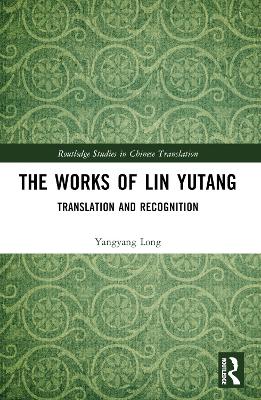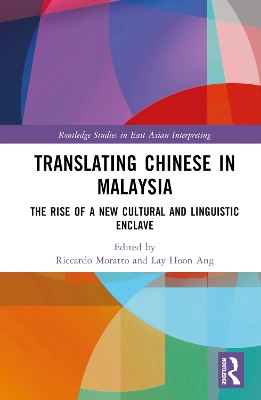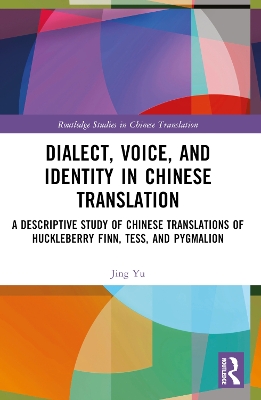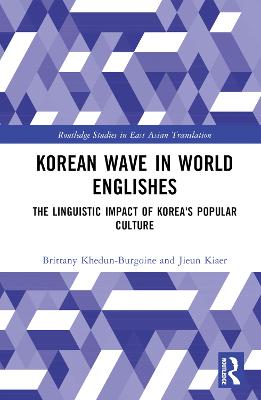Works of Lin Yutang
 portes grátis
portes grátis
Works of Lin Yutang
Translation and Recognition
Long, Yangyang
Taylor & Francis Ltd
12/2024
126
Mole
9781032549576
Pré-lançamento - envio 15 a 20 dias após a sua edição
Descrição não disponível.
Acknowledgements
Introduction
0.1 Translation and recognition
0.2 Studying Lin Yutang from the perspective of translation and recognition
0.3 Chapter summary
Chapter 1 Lin Yutang and his view of recognition
1.1 Lin Yutang's life and works
1.2 Securing recognition: Lin Yutang's challenge to cultural reductionism
1.3 Lin Yutang's view of recognition
Chapter 2 Translation, literature and philosophy: Lin Yutang's three pillars and the space of zhongyong
2.1 Lin Yutang's theorisations of three pillars and the space of zhongyong
2.2 Zhongshi and foreignisation: Liberating China from the English-speaking world
2.3 Tongshun and domestication: Translating China as intelligible to the English-speaking world
2.3.1 Trans-editing
2.3.2 Trans-creation
2.3.3 Analogy
2.4 Mei and central harmony: A space of zhongyong through translation
Chapter 3 Translation and war: Lin Yutang's 'international contact' vs. The United States' isolationism
3.1 The United States' isolationism
3.2 An antidote for isolationism: Lin Yutang's 'international contact' and the war as a joint battle
3.3 Recognising China's strategic significance as a major ally in the Asia Pacific theatre
3.4 Lin Yutang's intervention in the Sino-American relations
Chapter 4 Translation and empire: Lin Yutang's vision of the new world order after the second world war
4.1 Lin Yutang's denunciation of Britain's imperialist mentality
4.2 Lin Yutang's belief in the Atlantic Charter and internationalism
4.3 India's freedom and racial equality
Conclusion
Index
Introduction
0.1 Translation and recognition
0.2 Studying Lin Yutang from the perspective of translation and recognition
0.3 Chapter summary
Chapter 1 Lin Yutang and his view of recognition
1.1 Lin Yutang's life and works
1.2 Securing recognition: Lin Yutang's challenge to cultural reductionism
1.3 Lin Yutang's view of recognition
Chapter 2 Translation, literature and philosophy: Lin Yutang's three pillars and the space of zhongyong
2.1 Lin Yutang's theorisations of three pillars and the space of zhongyong
2.2 Zhongshi and foreignisation: Liberating China from the English-speaking world
2.3 Tongshun and domestication: Translating China as intelligible to the English-speaking world
2.3.1 Trans-editing
2.3.2 Trans-creation
2.3.3 Analogy
2.4 Mei and central harmony: A space of zhongyong through translation
Chapter 3 Translation and war: Lin Yutang's 'international contact' vs. The United States' isolationism
3.1 The United States' isolationism
3.2 An antidote for isolationism: Lin Yutang's 'international contact' and the war as a joint battle
3.3 Recognising China's strategic significance as a major ally in the Asia Pacific theatre
3.4 Lin Yutang's intervention in the Sino-American relations
Chapter 4 Translation and empire: Lin Yutang's vision of the new world order after the second world war
4.1 Lin Yutang's denunciation of Britain's imperialist mentality
4.2 Lin Yutang's belief in the Atlantic Charter and internationalism
4.3 India's freedom and racial equality
Conclusion
Index
Este título pertence ao(s) assunto(s) indicados(s). Para ver outros títulos clique no assunto desejado.
Lin Yutang;translation;Chinese;Anglophone;recognition;Cultural Equity;Lin's Translation;Anglophone World;Disengaged;Post-war;War Time;Anglophone Readers;United States;Source Text;Allied Nations;Target Culture;USA;Translational Space;Central Harmony;Allied Members;Sino American Relations;Asia Pacific Theatre;Atlantic Charter;Joint Battle;Cultural Reductionism;Intercollegiate Socialist Society;National Interests;Ku Hung Ming;Source Culture
Acknowledgements
Introduction
0.1 Translation and recognition
0.2 Studying Lin Yutang from the perspective of translation and recognition
0.3 Chapter summary
Chapter 1 Lin Yutang and his view of recognition
1.1 Lin Yutang's life and works
1.2 Securing recognition: Lin Yutang's challenge to cultural reductionism
1.3 Lin Yutang's view of recognition
Chapter 2 Translation, literature and philosophy: Lin Yutang's three pillars and the space of zhongyong
2.1 Lin Yutang's theorisations of three pillars and the space of zhongyong
2.2 Zhongshi and foreignisation: Liberating China from the English-speaking world
2.3 Tongshun and domestication: Translating China as intelligible to the English-speaking world
2.3.1 Trans-editing
2.3.2 Trans-creation
2.3.3 Analogy
2.4 Mei and central harmony: A space of zhongyong through translation
Chapter 3 Translation and war: Lin Yutang's 'international contact' vs. The United States' isolationism
3.1 The United States' isolationism
3.2 An antidote for isolationism: Lin Yutang's 'international contact' and the war as a joint battle
3.3 Recognising China's strategic significance as a major ally in the Asia Pacific theatre
3.4 Lin Yutang's intervention in the Sino-American relations
Chapter 4 Translation and empire: Lin Yutang's vision of the new world order after the second world war
4.1 Lin Yutang's denunciation of Britain's imperialist mentality
4.2 Lin Yutang's belief in the Atlantic Charter and internationalism
4.3 India's freedom and racial equality
Conclusion
Index
Introduction
0.1 Translation and recognition
0.2 Studying Lin Yutang from the perspective of translation and recognition
0.3 Chapter summary
Chapter 1 Lin Yutang and his view of recognition
1.1 Lin Yutang's life and works
1.2 Securing recognition: Lin Yutang's challenge to cultural reductionism
1.3 Lin Yutang's view of recognition
Chapter 2 Translation, literature and philosophy: Lin Yutang's three pillars and the space of zhongyong
2.1 Lin Yutang's theorisations of three pillars and the space of zhongyong
2.2 Zhongshi and foreignisation: Liberating China from the English-speaking world
2.3 Tongshun and domestication: Translating China as intelligible to the English-speaking world
2.3.1 Trans-editing
2.3.2 Trans-creation
2.3.3 Analogy
2.4 Mei and central harmony: A space of zhongyong through translation
Chapter 3 Translation and war: Lin Yutang's 'international contact' vs. The United States' isolationism
3.1 The United States' isolationism
3.2 An antidote for isolationism: Lin Yutang's 'international contact' and the war as a joint battle
3.3 Recognising China's strategic significance as a major ally in the Asia Pacific theatre
3.4 Lin Yutang's intervention in the Sino-American relations
Chapter 4 Translation and empire: Lin Yutang's vision of the new world order after the second world war
4.1 Lin Yutang's denunciation of Britain's imperialist mentality
4.2 Lin Yutang's belief in the Atlantic Charter and internationalism
4.3 India's freedom and racial equality
Conclusion
Index
Este título pertence ao(s) assunto(s) indicados(s). Para ver outros títulos clique no assunto desejado.
Lin Yutang;translation;Chinese;Anglophone;recognition;Cultural Equity;Lin's Translation;Anglophone World;Disengaged;Post-war;War Time;Anglophone Readers;United States;Source Text;Allied Nations;Target Culture;USA;Translational Space;Central Harmony;Allied Members;Sino American Relations;Asia Pacific Theatre;Atlantic Charter;Joint Battle;Cultural Reductionism;Intercollegiate Socialist Society;National Interests;Ku Hung Ming;Source Culture







